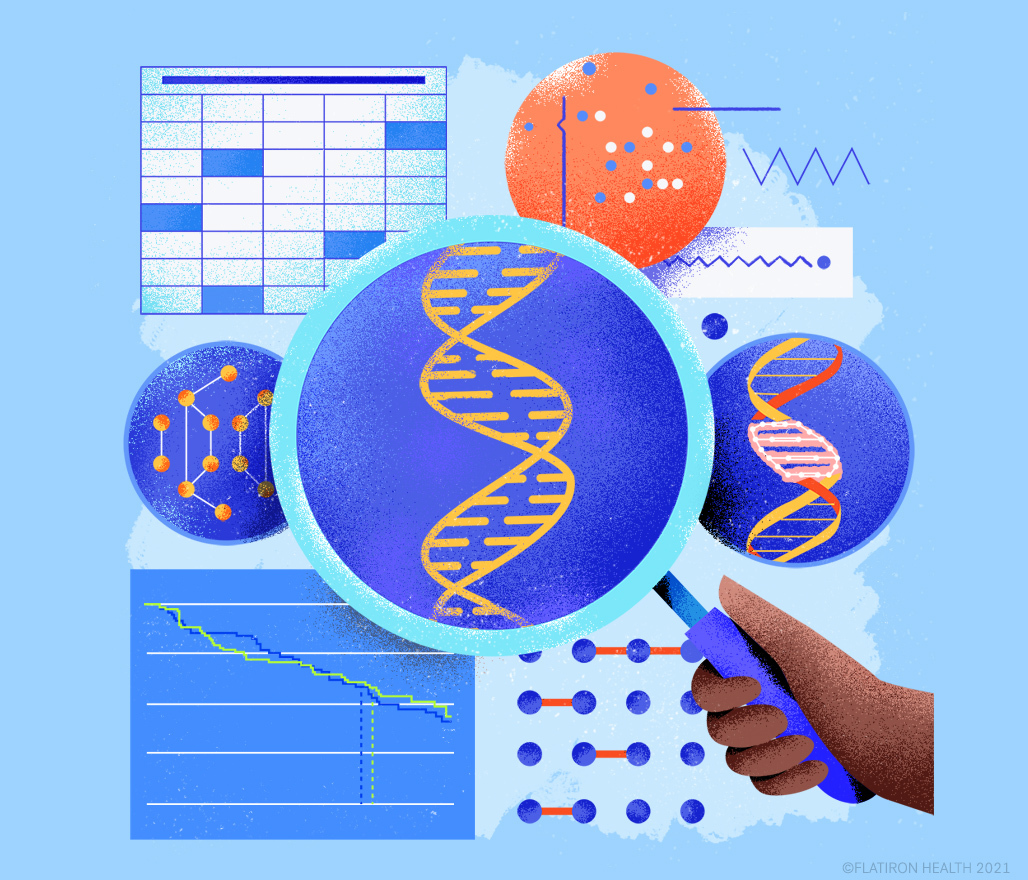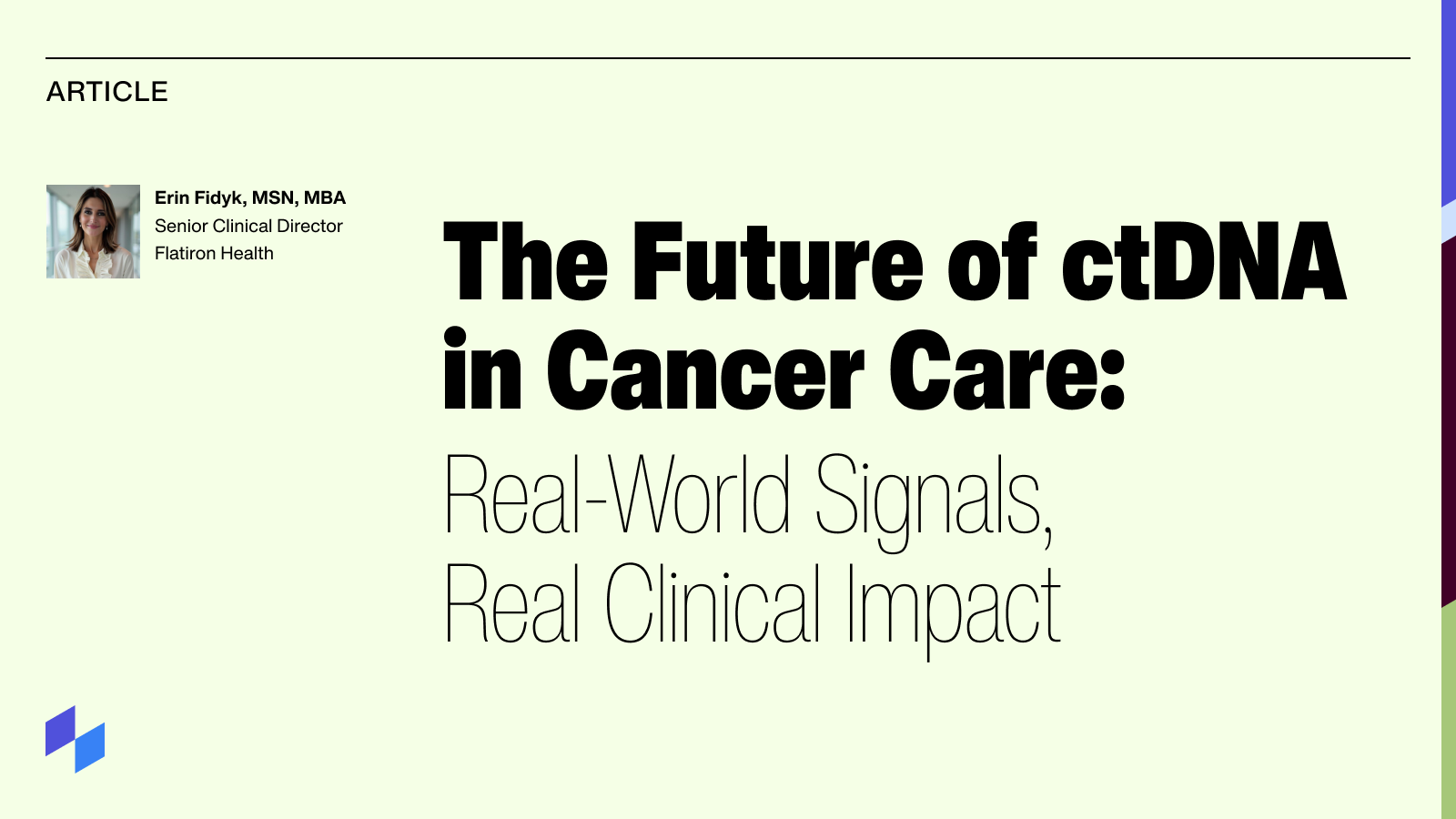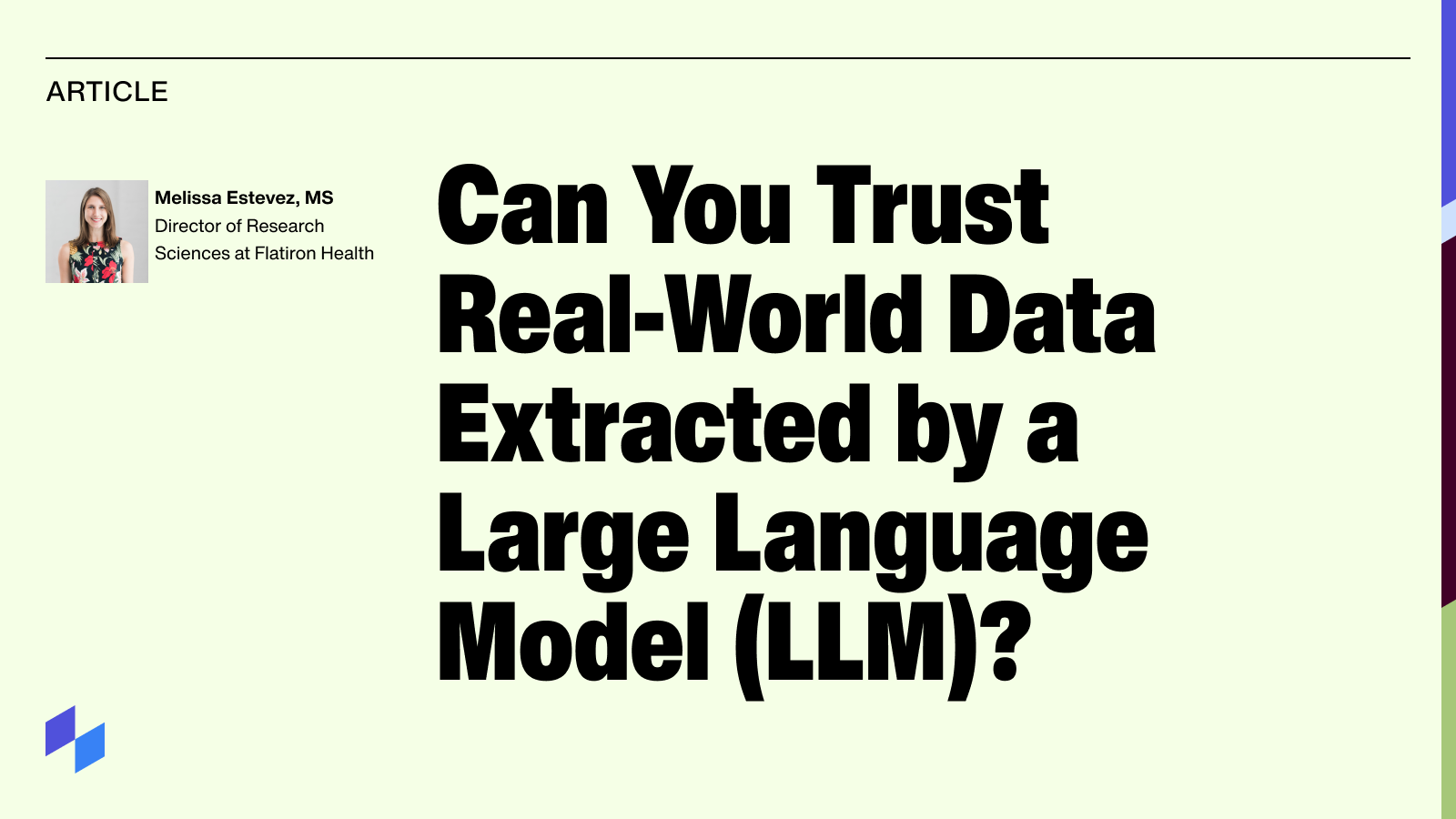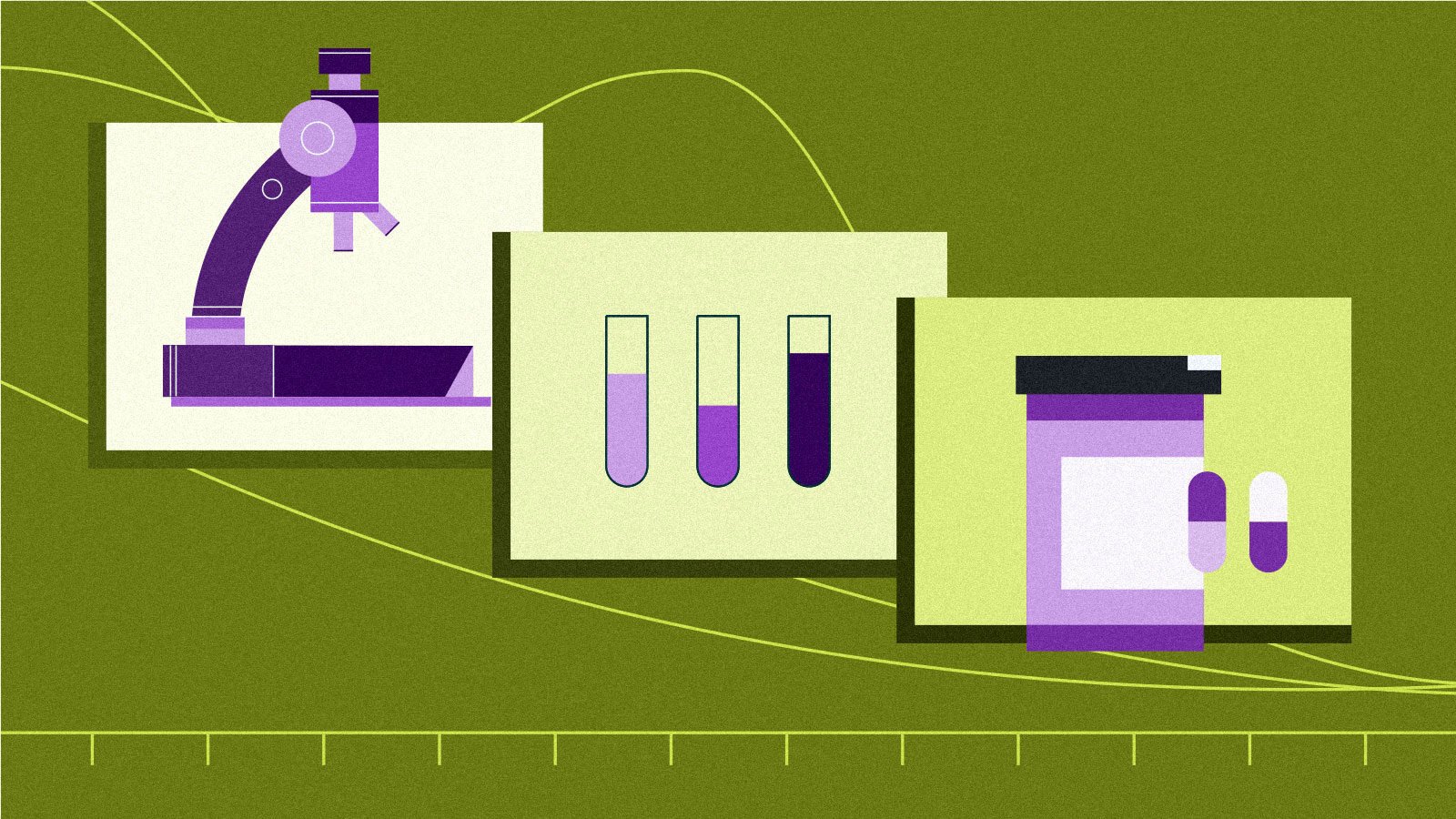The longstanding partnership between Flatiron Health and Foundation Medicine is grounded in a shared belief that harnessing the continuous flow of real-world data in real time, and in the right way, can transform precision medicine and provide a fundamental tool to accelerate advances in treatment and improve outcomes for patients with cancer.
The oncology community has long recognized the importance of access to high-quality , population-level, real-world clinico-genomic data (RWCGD) and its widespread potential, from informing target identification and optimizing study design , to strengthening regulatory submissions and delivering real-time insights that help influence clinical practice.
For this potential to be fully realized, however, the data must be reflective of the broader overall population to maximize the ability to generate clinically relevant insights.
Our Clinico-Genomic Database (CGDB) is a real-world data source that links Foundation Medicine's de-identified comprehensive genomic profiling (CGP) data with Flatiron's de-identified clinical data captured from electronic health records. The CGDB has doubled in size in two years and, as of Q1 2021, includes data from a population of approximately 74,000 patients with cancer.
For any real-world database, there is a tipping point at which the breadth of information it contains is comprehensive enough to become reflective of the wider population. For the CGDB, this tipping point is best reached in a particular cancer type when CGP becomes part of the standard of care .
Two abstracts presented at the American Association for Cancer Research (AACR) Annual Meeting this year highlight improvements in the uptake and acceptance of CGP over time and what that means for the evolution and potential application of the CGDB going forward.
Study 1: The influence of CGP uptake on RWCGD in aNSCLC
In this study, we examined real-world next-generation sequencing-based CGP patterns and clinical characteristics of patients with advanced non-small cell lung cancer (aNSCLC) over time, using three real-world, de-identified databases – our joint NSCLC CGDB, Flatiron's aNSCLC clinical dataset, and the National Cancer Institute's Surveillance, Epidemiology and End-Results (SEER) population-based cancer registry .
There have been rapid advances in treatment for aNSCLC in recent years, with dramatic increases in the number of actionable targets identified and precision treatments available. The results demonstrated that, in line with this growth, CGP testing has increased markedly and moved earlier in the treatment pathway.
By comparing characteristics of patients with aNSCLC in the CGDB to those in the other two nationally representative databases, the study demonstrated that, as CGP testing has become part of the standard of care in aNSCLC, CGP-tested patients are becoming more reflective of the general aNSCLC population.
In other words, for aNSCLC, the CGDB has now reached that all important tipping point to generate insights more applicable to the entire aNSCLC population, exponentially amplifying the value and potential application of the data.
Study 2: Testing patterns in breast cancer highlight an increasing role for CGP
To unlock the full potential of precision medicine in all tumor types, the breadth of data that CGP generates needs to continually expand.
Similar to what we've seen with aNSCLC, uptake of CGP in breast cancer has also increased over the past decade. In this study, Flatiron and Foundation Medicine analyzed data from the CGDB to look at patterns of testing, results, and patient characteristics across breast cancer subtypes .
Our analysis showed that, while CGP has not yet become standard of care in breast cancer as a whole, the uptake of CGP for patients with triple negative breast cancer, particularly in the earlier setting, was higher compared to the general population with this type of cancer.
Triple negative breast cancer is an aggressive cancer with few treatment options and identification of the optimal treatment is a priority. The increased uptake of CGP in this setting highlights the important role it can play in helping to identify treatment options for cancer patients with a high unmet treatment need.
A future of possibilities
These two studies reinforce how the adoption of CGP has increased considerably as testing becomes a fundamental part of routine cancer care.
As confidence in real-world data continues to increase among stakeholders across the precision medicine ecosystem, we see more pronounced, tangible impacts of these data in research and in the delivery of new treatments.
This shift has been particularly relevant this past year, as the COVID-19 pandemic has impacted cancer research. While recruitment has slowed for many oncology clinical trials, use of RWCGD has accelerated, as many clinical researchers pursue innovative approaches to complement traditional evidence generation. This has helped to drive a wider appreciation of the importance of real-world genomic data in precision oncology. This year's AACR is a welcome reminder of the resilience and dedication of the oncology research community in transforming the treatment of cancer.
Swaminathan A, et al. Changes over time in real-world next-generation sequencing (NGS) test use in patients (pts) with advanced non-small cell lung cancer (aNSCLC) [abstract]. In: Proceedings of the 112th Annual Meeting of the American Association for Cancer Research; 2021 April 10-15. Philadelphia (PA): AACR; 2021. Abstract nr 864
Rody A, et al. Comprehensive genomic profiling (CGP) in breast cancer (BC): Patterns and results from a clinico-genomic database [abstract]. In: Proceedings of the 112th Annual Meeting of the American Association for Cancer Research; 2021 April 10-15. Philadelphia (PA): AACR; 2021. Abstract nr 437



